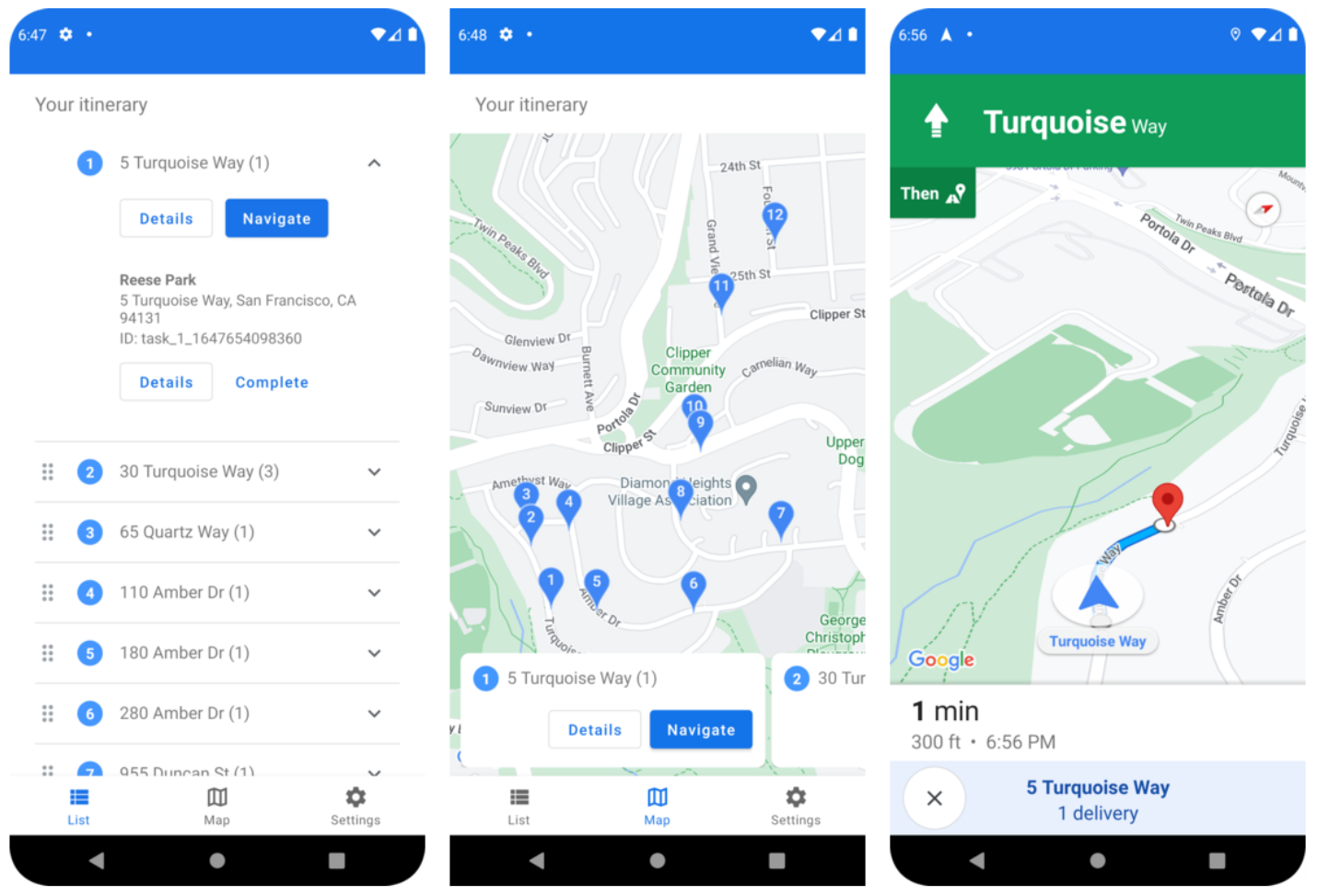
Driver SDK 是行動應用程式工具包,也是 Fleet Engine 的基本元件。透過這個 SDK,司機應用程式可以管理工作指派,並啟用司機導航和路線規劃功能。
事前準備
本指南假設您已閱讀下列內容:
什麼是排定工作的 Driver SDK?
Driver SDK 會將車輛位置和工作更新資訊傳送至 Fleet Engine,方便 Fleet Engine 管理外送車輛,以及指派的外送停靠點和工作。SDK 基本上會使用事件監聽器,在駕駛人開始開車時,將位置更新和經緯度座標,以及目前路線區段和目的地,從 Navigation SDK 傳送至 Fleet Engine。
為什麼要使用 Driver SDK 執行排定工作?
透過 Driver SDK,您可以更輕鬆地與 Fleet Engine 整合,更新駕駛人的路線。有了這個 SDK,駕駛人就能使用單一應用程式管理指派事項及導航,就像使用 Google 地圖的消費者版本一樣,不必切換到其他應用程式。
使用 Driver SDK 執行排定工作
使用 Driver SDK 執行排定工作,與 Fleet Engine 溝通下列事項:
- 地圖上顯示的送貨車輛即時位置。
- 停靠站的經緯度座標。
- 距離停靠站的剩餘距離。
- 預計抵達停靠站的時間。
- 車輛需要採取的路線,由 Navigation SDK 提供。
排定工作專用的 Driver SDK 運作方式
Driver SDK 依附於 Navigation SDK,以取得路線資訊和目的地。Driver SDK 會整合至駕駛人應用程式,並與 Navigation SDK 的資訊搭配使用,向 Fleet Engine 提供位置更新、經緯度座標、剩餘距離和預計抵達時間等資料串流。所有其他車輛資料更新都必須傳送至客戶後端,後端會將資料轉送至 Fleet Engine。

如何使用 Driver SDK 執行排定工作
請選取平台,瞭解如何開始使用 Driver SDK。
Android
| 1 | 取得 Android 版 Driver SDK | 詳情請參閱「取得 Driver SDK」。 |
| 2 | 設定 Google Cloud 控制台專案 | 詳情請參閱「設定 Google Cloud 控制台專案」。 |
| 3 | 宣告依附元件 | 詳情請參閱「宣告依附元件」。 |
| 4 | 建立驗證權杖 | 詳情請參閱「建立驗證權杖」。 |
| 5 | 初始化 Driver SDK | 詳情請參閱「初始化 Driver SDK」。 |
| 6 | 準備車輛 | 詳情請參閱「準備車輛」。 |
iOS
| 1 | 取得 Driver SDK for iOS | 詳情請參閱「取得 Driver SDK」。 |
| 2 | 設定 Google Cloud 控制台專案 | 詳情請參閱「設定 Google Cloud 控制台專案」。 |
| 3 | 建立驗證權杖 | 詳情請參閱「建立驗證權杖」。 |
| 4 | 初始化 Driver SDK | 詳情請參閱「初始化 Driver SDK」。 |
| 5 | 準備車輛 | 詳情請參閱「準備車輛」。 |
後續步驟
請參閱您要設定 Driver SDK 的平台說明文件:

